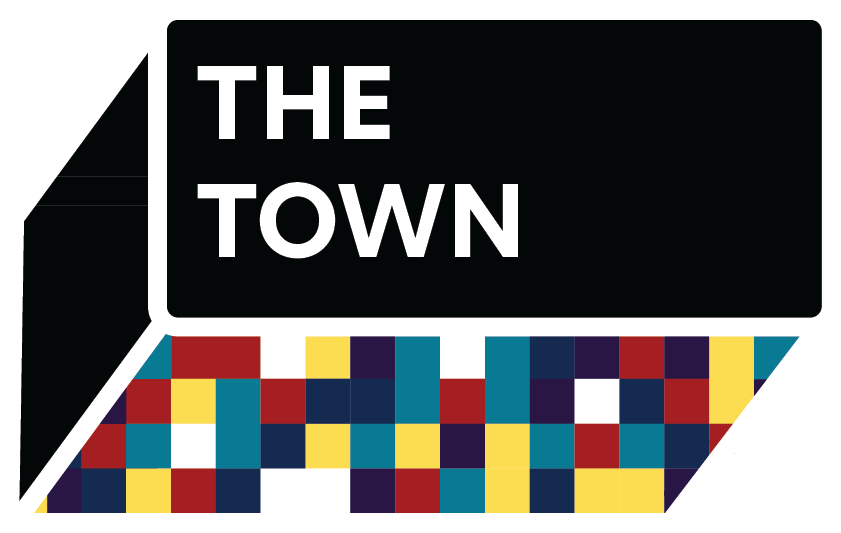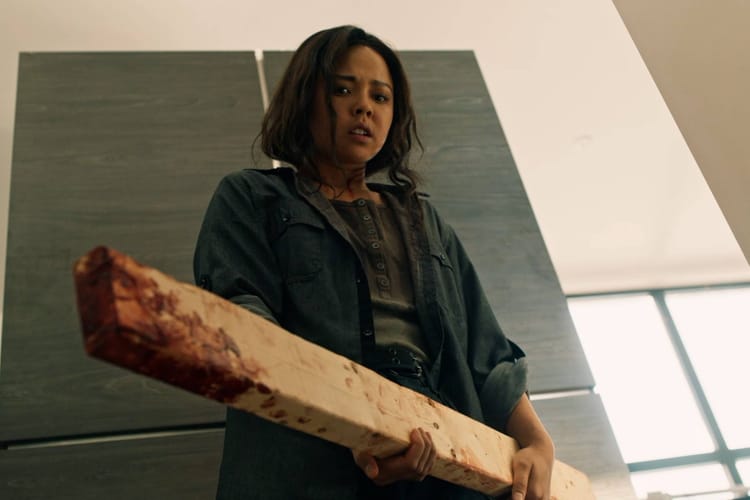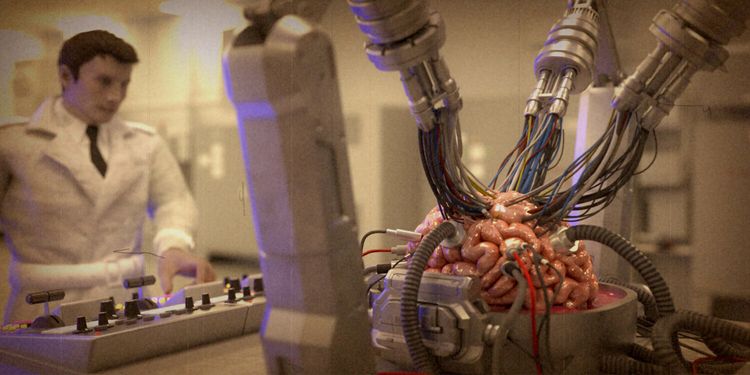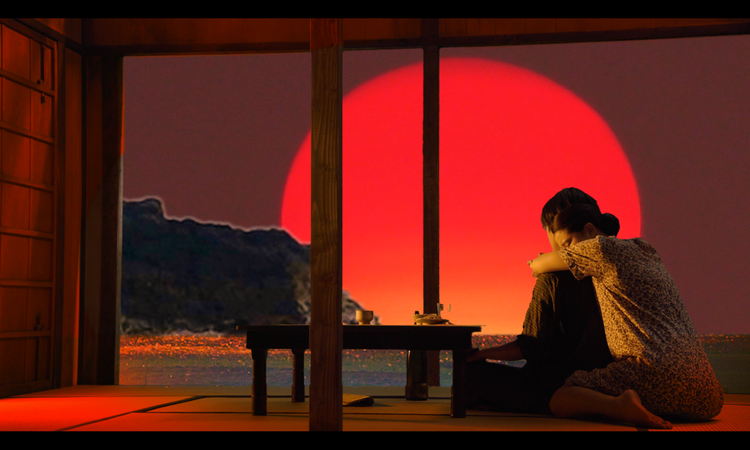As empathy machines, movies can only take us so far

If there is a limit to how far cinema’s role as an empathy machine can go - its line can likely be found in The Reason I Jump directed by Jerry Rothell and currently playing at the Hot Docs virtual cinema.
The film adapts a seminal text and memoir by Naoki Higashida, and - like its source material - aims to correct the patterns that blunt society’s misunderstanding of non-speaking, autistic individuals such as Higashida by expressing their perspective first-hand. Unlike its source material, the film’s narrative is not wholly constructed by Higashida himself. The result is that ironically the film: telling its story in a medium that puts faces and emotions literally in front of us, ends up severing the direct, human connection we the audience has to Higashida’s story.
This of course is not Rothwell’s fault - nor is it a reason to not see the film. Cinema is by definition an exercise in arranging artifice. We understand that when we pay the price of admission, we simply hope a director’s sleight of hand is in service to a greater good. We pay filmmaker’s to build us flawed audio-visual experiences in pursuit of something.
In documentaries, that something is often an empathetic education. Pointing a camera at a subject or a character. Balancing the brightness of the light to cast a specific shadow. Swelling the violin to elicit a predetermined emotion: these are tricks of the trade.
Rothwell’s toolkit of tricks, like that of most filmmakers who reach their 11th director’s credit, is fine-tuned. He spares no hesitancy in deploying them in The Reason I Jump in ways that are both sound and impactful. He includes Higashida’s written voice through narration. He casts a young boy to stand-in for Higashida as those recollections wash over his childhood. He makes the decision to not only adapt but expand on Higashida’s text and intention by centering the film on the perspectives and stories of other non-verbal autistic individuals.
These all amount to a film that does the same job as the written memoir but in the medium of film. A media product soliciting understanding through empathy. A tool to chip at the ableist, and ignorant assumptions the audience member has made about autistic individuals their whole lives. The film breaks down the block I - and possibly you - had that was, until we streamed it, fortified under the weight of an openly hostile society. In a world oriented around us It’s a privilege, we learn, to simply be afraid of experiences and views we don’t understand.
On a deeper reflectionThe Reason I Jump left me unsettled. To understand the experience of the world as a non-verbal autistic person the film deploys fragmented distortions of a neurotypical perception. It establishes a visual language that expresses joyful and traumatic memories spiraling continuously into the present. Its cinematography develops a vocabulary of fixations - some cathartic and others anxiety-inducing - that dominate routines. It establishes that for non-verbal autistic individuals the potential for undisputable genius, limitless creativity, and astonishing resilience is the same as you’d find in anyone else.
These descriptions are pulled directly from Higashida’s memoir and are demonstrated directly by the actions and reflections of the film’s subjects - with the crucial caveat of course that there is no universal, autistic experience that the film or text, nor anything or anyone, could establish with absolute authority.
If we seek quality journalism and quality memoir in our documentary - the perspectives we do spend time with within the film are vital. However, it is in the artifice of the filmmaking, the “adaptation” of these perspectives into hyper-focused shots, intentionally vibrating sound design and the rapid accelerations through frames that the exercise of making, and in equal parts enjoying, this film begins to feel limited in a profound way.
The issue is that aesthetics, in our world, have an outsized command and power. A neurotypical audience should leave The Reason I Jump with the understanding they’ve had a profoundly crucial chance to see the tip of an iceberg. However, the same audience deeply impacted by this film is the same audience that has never lived, worked, or connected with others in any society other than the ableist one we all share.
In that society, learning about perspectives other than our own is not a systemic, educational project. It’s a commodity with one target demographic that actively seeks it out from a box office and another content to ignore it. For the former, the limited time spent outside of their vantage point, the aesthetic accentuation, the feeling good about oneself for having consumed it is part of the contract. It does not work if some portion of the audience can’t claim access to an earned universal understanding that does not exist - even if that claim lingers only in the subconscious.
There is another film, Sound Of Metal, directed by Darius Marder and on offer at the TIFF virtual cinema, which draws on a similar style and approach to its subject as The Reason I Jump. In its - this time fictional - approach the artistic license and adaptation of the deaf experience operates almost entirely in the film’s sound design. We the audience listen As Ruben Stone - a character played to his core by Riz Ahmed - begins to lose his hearing, his identity as a metal drummer, and his perceived control of his own reality. The stand-out aesthetic choices here are sonic: overblown mics, muted reverberations, the intentionally uncanny (for the film’s target demographic at least) depiction of reality without sound.
The film is fixated on Stone’s personal journey to exert control over his circumstances. Stone’s definition of control is focused obsessively on “curing” his own deafness and reestablishing his “normal” life. In a large portion of the deaf community, including the very one that helped Stone find his footing when he first loses his hearing, such a view is abhorrent.
Deafness is not something to be cured but instead embraced and celebrated. Stone, despite having the privilege to learn these perspectives, and witness them first-hand can not help but betray the community that took him in and took the time to share their views, experiences, and trauma for his benefit. In the end, the long-held, ableist notion that he can and should be “cured” wins. He sells his tour van and his drum kit - his heart and his soul - to purchase cochlear implants that proclaim an easy way to regain a life he still perceives as lost.
He unfairly puts the weight of that life on his girlfriend Lou - played by Olivia Cooke - and, while his physical and emotional scars are still healing, he sets off for Europe to see her. She was his soul mate, his lead singer, his best friend, and his family - strung together by a connection that was forged from years of living out of a trailer, crisscrossing America, and living their dream. All that however is burrowed in the past, now they are at a party in a crowded Parisian parlor and are divided by chasm - not just of time and distance but of estrangement and two fundamentally unbridgeable perspectives.
It’s at that party when she goes to sing that her once familiar, reassuring, and beautiful voice pierces through Stone's implants for the first time. Her voice is a dizzy patchwork of high-pitched whines, muddled scratches, and sonic distortion. As the parlor erupts in spellbound applause, Stone allows himself to finally understands that he will never truly hear her sing again. His life now is fundamentally different - and that difference is not an end, but a beginning.
If we’re interested in talking about aesthetics the scene is beautiful and haunting. Like the cinematography of The Reason I Jump, the sound design is still bouncing around in my memory. As a climax, it allows Stone’s tragically delayed character development to swell before the viewer’s eyes. Brilliant actors like Ahmed are the cog that makes the empathy machine’s fictional iterations fire. In the soul-crushing realization he projects, the empathetic journey you are meant to take in the Sound Of Metalreaches its apex.
Still, I’m left wondering if these journeys -in many ways one of the key reasons some of us watch movies - aren’t harmful if left unexamined. I’m not deaf, or a non-verbal autistic person. My access to these perspectives, when they are created on screen, is a commercial one. I’m purchasing an aesthetic treatment of the everyday realities of people other than me because I enjoy them. Having seen them, and having moved on with my life I’ve paid for the feeling-good I consciously and subconsciously seek. I’m certainly guilty after the credits roll - as I’m sure many others are - in carrying on as if my work is done.
While film-by-film, self-reflection is one thing, en masse I’m left with a lingering question: do movies allow us to see the perspectives of others, or do they instead allow us to see others as characters in a movie? If the latter is more true what damage does it cause?
To be clear - Sound Of Metaland The Reason I Jumpare beautiful films. Streaming them at Hot Docs and TIFF not only supports the filmmakers - many of who brought their perspectives directly into the collaborative process, but also our independent cinemas here in the city. You should absolutely watch both of them.
It’s just that for me, films that manage to nail this mode of storytelling always warrant questions about why I watch movies in the first place and what their ultimate value is. I won’t for a moment pretend I have the answer - but I know that if the stated intentions of these films are to work, the onus is placed on we the audience as much as it is placed on the filmmaker. The watching, the feeling-good, cannot be the end of our obligations as a viewer, but simply the beginning.





